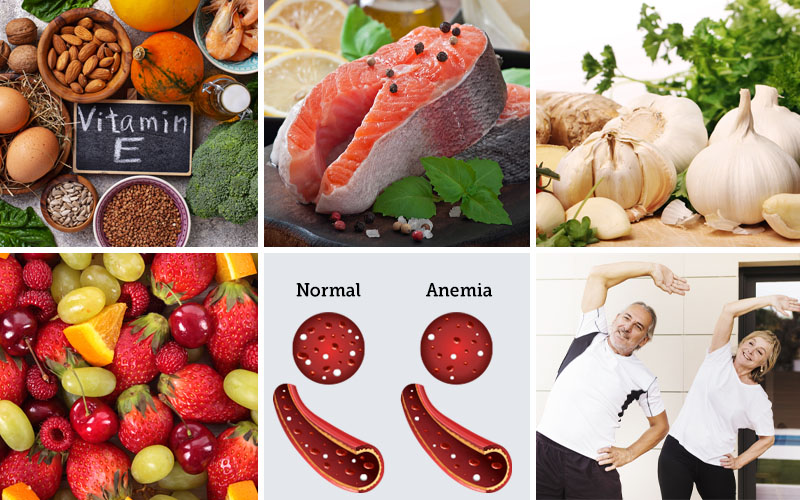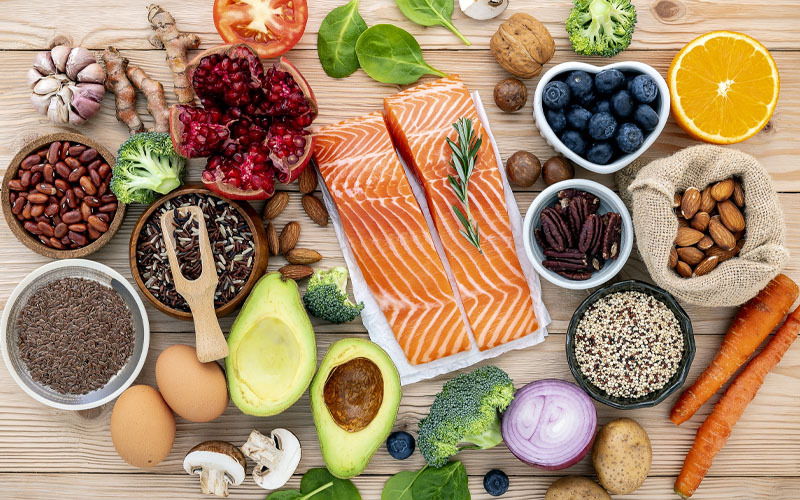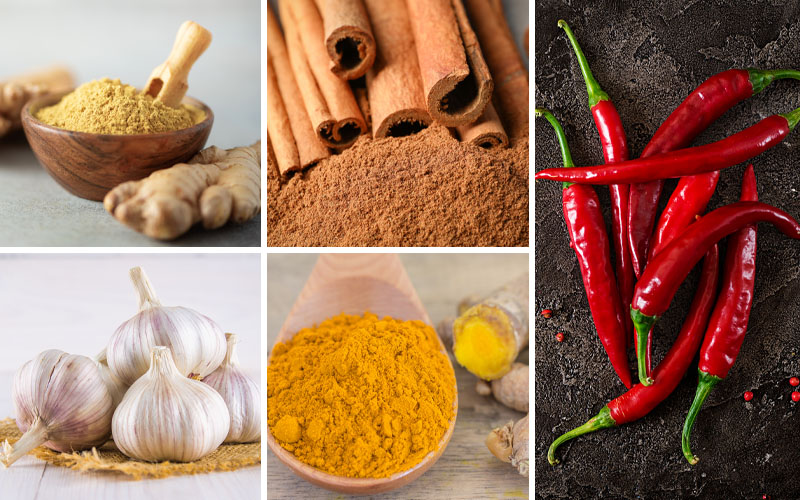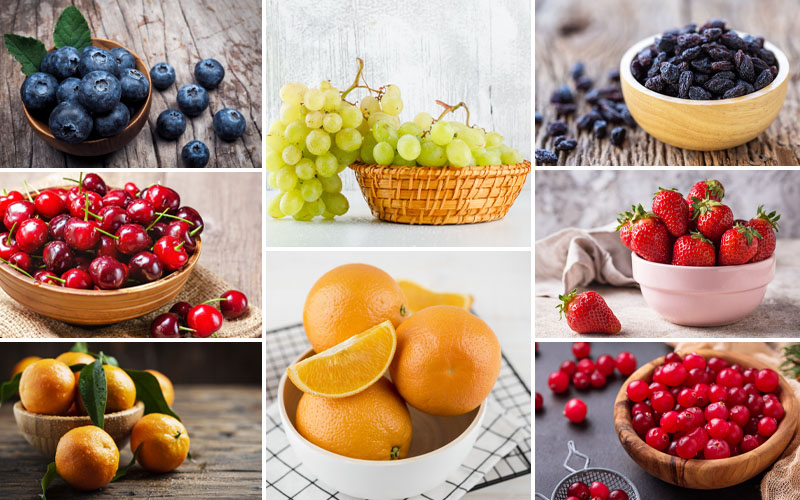“Blood is thicker than water” – you must have heard it quite a lot.
From the behavioral science aspect, it holds its weight. But does ‘the thicker, the better’ hold true from a health perspective too?
Not at all.
In fact, thick blood or clots hinder the smooth flow of your blood in the body, which is fatal.
Although there are uncountable drugs for blood thinning like Aspirin and Heparin.
But today we’ll discuss absolutely natural ways by which you can thin your blood.
So, let’s discuss this.
Table of Contents
Reasons for Thick Blood (Causes of Hypercoagulability)

Too thick or too thin blood, both are dangerous. Thick blood can form clots, whereas thin can cause easy bruising and bleeding.
Red blood cells are a key factor in creating clots because they are the highest in number.
Another factor is the presence of Low-density lipoproteins (LDL) in the blood. The more the LDLs in blood, the thicker the blood.
Another reason is the chronic inflammation that increases the viscosity of the blood.
Summarizing the causes of thick blood, we can say it’s because of:
- Heavy Proteins in the blood circulation, or
- Too many red blood cells (Polycythemia Vera), or
- Imbalance in the blood clotting system, or
- Some specific diseases like Lupus, Inhibitors, or
- Low Antithrombin level, or
- Deficiency of protein C or S, or
- Mutation in Factor 5, or
- Mutation in Prothrombin, or
- Cancer
Blood thickening can cause strokes, heart attacks, and issues of kidney.

6 Ways To Thin Your Blood Naturally

Excessive blood clotting is extremely dangerous. In fact, 100,000 people die each year because of blood clots.
Here, it’s pertinent to mention that vitamin K does the opposite work, that is, thickens the blood. So, if you’re on a medicine that is meant to thin your blood, you must be very cautious while taking vitamin-K rich foods.
So, what are the natural ways which can help make our blood thin, other than over the counter blood thinners?
It includes food with high amounts of Salicylates, Omega-3 fatty acids, foods rich in vitamin E, and food with natural antibiotic properties.
Let’s look at the natural blood-thinning foods first.
1. Take Food Rich in Vitamin E

Vitamin E is a fat-soluble vitamin that’s a group of eight compounds, including tocopherols and four tocotrienols. Vitamin E is one of the most natural blood thinners.
Other Functions of Vitamin E
- It’s an antioxidant that protects the body from the damage caused by free radicals
- It helps the body to strengthen the immune system.
- It helps the body to use vitamin K.
- Widens the blood vessels and prevents it from clotting.
- Helps the cells carry out important functions
Foods that have vitamin E
- Vegetable Oils (sunflower oil, soybean oil, sesame oil, and its substitutes, corn oil, etc.)
- Nuts (almonds, hazelnuts, pine nuts, peanuts, etc.)
- Seeds (Sunflower seeds, pumpkin seeds, etc.)
How much should vitamin E be taken?
The Food and Nutrition Board at the Institute of Medicine recommends that for the children at the age of 9-13 years, its 11mg/day, whereas for adults, it’s 15mg/day.
How to take it?
- Vegetable oil can be used as per desire, like cooking, garnishing, Sautéing, etc.
- Nuts and seeds should be included in the daily diet
2. Take Omega-3 Fatty Acids Sources

A research in Poland discovered that omega-3 fatty acid courses, when combined with two blood-thinning drugs, clopidogrel, and aspirin, changed the process of blood clotting.
How Omega-3 Fatty acids act as Blood thinner?
Omega-3 sources have anti-thrombotic and anti-platelet properties, which, when added with other factors, increase the clot destruction time by 14.3%.
When used in combination with blood-thinning drugs, it produces less thrombin, which is a clotting factor, according to the experts.
Foods that have Omega-3 acids
There are three main types of omega-3 fatty acids, Alpha-linolenic (ALA), Eicosapentaenoic acid (EPA), and docosahexaenoic acid (DHA).
ALA is found in plant oils, whereas DHA and EPA are found in fish and seafood.
How much Omega-3 to Take?
Experts do not recommend any specific quantity of omega-3 fatty acids, except for ALA, for which the daily amount for men is 1.6 g, and for women is 1.1g.
How to take it?
Include fish like salmon, tuna sardines, nuts, plant oils, and fortified foods in your daily diet.
3. Take Spices Rich in Salicylates

Salicylates are the substance that is richly present in most of the commonly used spices.
They have the tendency to block vitamin K, as proved by a number of researches.
Let’s take an overview of the spices that are rich in salicylates.
i. Garlic

Garlic is the most common home ingredient for most of our recipes. The compounds in the garlic, such as Allicin, Methyl Allyl, etc. is said to have anti-thrombotic effects.
How does garlic act as a Blood thinner?
Garlic impacts both Fibrin and platelets, both of which are an integral part of blood clotting.
As a natural fibronyltaic, it increases fibrinolytic activity. In 1975, Bordia was the first person to show that garlic oil increased fibrinolytic activity after three hours of consumption.
He also concluded that 1gm/kg of fresh garlic increased FA from 36% to 130%.
Also, garlic and onions have natural antibiotics that can kill the intestinal bacteria that produce vitamin K.
How much Garlic to Take?
One garlic clove twice or thrice a day is more than enough to get its amazing benefits.
How to Use Garlic?
It can both be taken as raw or cooked.
In raw form, it can be used a topping in certain dishes, whereas in cooking, you may press it and use it with other ingredients in your dish.
ii. Ginger

Ginger is another spice that you might have known as an anti-inflammatory hitherto. But it’s one of the natural ways to prevent blood-clotting.
How does ginger act as a Blood thinner?
Ginger has a natural acid called salicylate: one of the core ingredients of aspirin tablets. That’s the reason doctors, most of the time, recommend aspirin as a blood thinner.
How much garlic to Take?
Dosage of 3g per day for at least three months is usually recommended
How to Use Ginger?
Both fresh rhizomes and dried ones have enough of salicylates to work as an anticoagulant.
iii. Cayenne pepper

It may sound strange, but yes, cayenne peppers do play a role in thinning our blood. Cayenne pepper is one of the hottest peppers available today.
It’s thin, long, bit curved from the tip side, and tends to hang from the stem rather than growing upright.
Its heat is measured between 30k to 50k Scoville Heat Units (SHU).
How cayenne pepper acts as a blood thinner?
Again like ginger, the ability of cayenne pepper or its substitutes to work as a blood thinner owes to the presence of salicylates in it.
How much cayenne pepper to Take?
There is no such medically prescribed dosage of cayenne pepper available. However, as per most trusted manufacturers, a daily intake between 30mg and 120 mg a day is just fine.
How to Use Cayenne Pepper?
Cooked in your favorite dish is just fine and perhaps the only option because you can’t take it orally.
iv. Turmeric

Turmeric is a famous spice worldwide that’ famous for its rhizomes.
It’s used both as fresh and boil-dried. Besides adding a unique golden color to the food, it increases its medicinal value as well.
In addition to being a powerful antioxidant and anti-inflammatory agent, it’s a powerful anti-coagulant as well.
How does turmeric act as a Blood thinner?
Curcumin is the ingredient in turmeric that has a natural blood-thinning property.
How much to Take?
You need to have 500-1000mg of turmeric a day
How to take it?
Curcumin in turmeric is fat-soluble. So, taking it with some fatty meal is advisable. In other words, use it in your recipes that require cooking.
Salicylates Works Through The Skin AS Well
v. Cinnamon

Cinnamon is another spice that’s rich in salicylates.
It’s obtained from the inner bark of the trees that fall under the Cinnamomum genus. The taste is both spicy and sweet.
How does cinnamon act as a Blood thinner?
Cinnamon is one of those spices that are rich in salicylates, which is the key factor in thinning the blood.
How much cinnamon to Take?
AS with other spices, there’s no specific dosage of cinnamon. Some recommend 2-4 grams of its powder a day. But avoid high dosages that may become toxic.
How to use cinnamon?
Being a spice, it can’t be taken alone orally. It’s better to use it in your daily cooked recipes, like curries.
Other spices that have plenty of salicylates include Dill, Thyme, Oregano, curry powder, etc. In other words, almost all the spices that are part and parcel of Indian cuisines are rich in salicylates.
4. Eat Fruits Rich in Salicylates

The following are a few of the blood-thinning fruits.
- Blueberries
- Cherries
- Cranberries
- Grapes
- Oranges
- Raisins
- Strawberries
- Tangerines
Kitchen Tips
Tip#2: If you’re a novice in kitchen chores, always wear protective gloves before cutting
5. Increase Your Iron Level

People with low iron levels have a higher risk of dangerous blood clots. So, keep your iron level high.
Tips to maximize your dietary iron intake include eating lean red meat, chicken, fish, and the consumption of vitamin C-rich foods.
6. Exercise

Exercise helps you control your weight, which otherwise causes multiple diseases if it increases to a certain level.
Using a fat burning massager is one of the ways of losing your excess fats.
During the studies conducted on female athletes, it was concluded that vigorous exercise lowers the amount of vitamin K.
That is why people who travel a lot for long hours or stay in bed are more prone to blood clots’ formation.
In other words, the more you remain stationary, the more the risks of blood clotting.
The Bottom Line
Blood-thinning medicines are many, but to do it naturally is always the best way. There are three categories of food that can thin your blood. It includes Vitamin E rich foods, Omega-3 fatty acid sources, spices, and fruits rich in salicylate.
On the other hand, vitamin K rich foods are the foods that thin the blood.
How conscious are you about blood thinning? Seeing the benefits of natural blood thinners above, are you planning to mold your diet plan according to this? Let us know in the comments section below.
Disclaimer
The above information has been curated after thorough research from the authentic sources. However, it cannot be taken as an alternative to your health care provider’s professional advice.


Please reread The Bottom Line and adjust it. It is misleading. A shame as it spoils an otherwise fascinating and very useful article which my husband and I are taking very careful note of and will mold our diet to improve it. Thank you
Thanks for pointing it out, Chris. Don’t know why the editor didn’t pick up the “thickening” part.